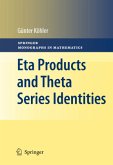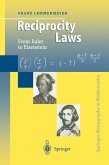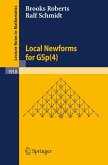This book deals with a broad range of topics from the theory of automorphic functions on three-dimensional hyperbolic space and its arithmetic group theoretic and geometric ramifications. Starting off with several models of hyperbolic space and its group of motions the authors discuss the spectral theory of the Laplacian and Selberg's theory for cofinite groups. This culminates in explicit versions of the Selberg trace formula and the Selberg zeta-function. The interplay with arithmetic is demonstrated by means of the groups PSL(2) over rings and of quadratic integers, their Eisenstein series and their associated Hermitian forms. A rich chapter on concrete examples of arithmetic and non-arithmetic cofinite groups enhances the usefulness of this work for a wide circle of mathematicians.
This book is concerned with discontinuous groups of motions of the unique connected and simply connected Riemannian 3-manifold of constant curva ture -1, which is traditionally called hyperbolic 3-space. This space is the 3-dimensional instance of an analogous Riemannian manifold which exists uniquely in every dimension n :::: 2. The hyperbolic spaces appeared first in the work of Lobachevski in the first half of the 19th century. Very early in the last century the group of isometries of these spaces was studied by Steiner, when he looked at the group generated by the inversions in spheres. The ge ometries underlying the hyperbolic spaces were of fundamental importance since Lobachevski, Bolyai and Gauß had observed that they do not satisfy the axiom of parallels. Already in the classical works several concrete coordinate models of hy perbolic 3-space have appeared. They make explicit computations possible and also give identifications of the full group of motions or isometries withwell-known matrix groups. One such model, due to H. Poincare, is the upper 3 half-space IH in JR . The group of isometries is then identified with an exten sion of index 2 of the group PSL(2,
This book is concerned with discontinuous groups of motions of the unique connected and simply connected Riemannian 3-manifold of constant curva ture -1, which is traditionally called hyperbolic 3-space. This space is the 3-dimensional instance of an analogous Riemannian manifold which exists uniquely in every dimension n :::: 2. The hyperbolic spaces appeared first in the work of Lobachevski in the first half of the 19th century. Very early in the last century the group of isometries of these spaces was studied by Steiner, when he looked at the group generated by the inversions in spheres. The ge ometries underlying the hyperbolic spaces were of fundamental importance since Lobachevski, Bolyai and Gauß had observed that they do not satisfy the axiom of parallels. Already in the classical works several concrete coordinate models of hy perbolic 3-space have appeared. They make explicit computations possible and also give identifications of the full group of motions or isometries withwell-known matrix groups. One such model, due to H. Poincare, is the upper 3 half-space IH in JR . The group of isometries is then identified with an exten sion of index 2 of the group PSL(2,
Das vorliegende Buch hat alle Chancen, eine Standardreferenz zu werden. Es eignet sich sowohl als Nachschlagewerk für Experten in diesem Bereich als auch als Lektüre für Einsteiger. DMV Jahresbericht, Bd. 103, Heft 1, 2001.
"Das vorliegende Buch hat alle Chancen, eine Standardreferenz zu werden. Es eignet sich sowohl als Nachschlagewerk für Experten in diesem Bereich als auch als Lektüre für Einsteiger."DMV Jahresbericht, Bd. 103, Heft 1, 2001








